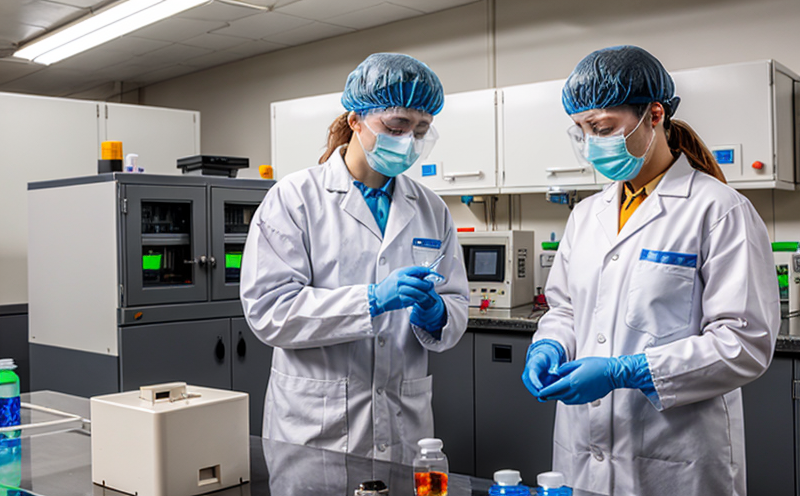EN 18022 PAH Detection in Smoked Fish Products
The European Standard EN 18022 specifies methods and procedures for determining polycyclic aromatic hydrocarbons (PAHs) in smoked fish products. This service is crucial for ensuring the safety of foodstuffs, particularly those derived from aquatic sources like smoked fish.
Polycyclic aromatic hydrocarbons are a group of compounds that can be formed during the smoking process due to incomplete combustion. These compounds have been linked to various health risks including carcinogenicity and mutagenicity. Hence, regulatory bodies such as the European Union mandate regular testing to ensure compliance with set limits.
The detection of PAHs in smoked fish products is a complex process that involves several stages from sample preparation to final analysis. The specimen must first be prepared by removing any visible foreign matter and ensuring it is homogenous for accurate results. This step ensures that the test reflects the true composition of the product rather than surface contaminants.
The analytical techniques used in this service typically include gas chromatography-mass spectrometry (GC-MS) which allows for precise identification and quantification of PAHs based on their unique mass-to-charge ratios. This method is preferred due to its high sensitivity and selectivity, making it suitable even when dealing with trace amounts of these compounds.
The acceptance criteria stipulated by EN 18022 are designed to protect public health while also considering the practical aspects of food production. Compliance with these standards helps manufacturers maintain their reputation for producing safe, high-quality products that meet international regulatory requirements.
It's important to note that accurate interpretation of results is key in maintaining compliance. Misinterpretation or incorrect application can lead to false positives or negatives which may impact both consumer confidence and business operations negatively. Therefore, it’s advisable always to consult with experts when interpreting your test data.
By adhering strictly to EN 18022 guidelines during the detection of PAHs in smoked fish products, laboratories ensure they are providing reliable information that supports informed decision-making by stakeholders involved at every stage of production and distribution.
- Precision: The method provides consistent results across multiple analyses performed under identical conditions.
- Sensitivity: Capable of detecting PAHs even at very low concentrations, ensuring no harmful levels go undetected.
- Selectivity: Ensures accurate identification by distinguishing different types of PAHs based on their unique molecular structures.
Frequently Asked Questions
Benefits
- Health Protection: Ensures that smoked fish products do not contain harmful levels of PAHs which could pose serious health risks to consumers.
- Compliance Assurance: Helps businesses meet EU regulations and avoid potential legal issues and penalties associated with non-compliance.
- Consumer Trust: Demonstrates a commitment to producing safe, high-quality products that can build long-term relationships with customers.
Industry Applications
This service is particularly relevant for manufacturers of smoked fish products who wish to ensure their offerings comply with international standards. By adhering strictly to EN 18022 guidelines, they contribute towards maintaining industry-wide best practices and safeguarding public health.
Use Cases and Application Examples
A real-world application could involve a company sourcing fish from various suppliers. Before accepting delivery, the supplier might request PAH testing to verify that the shipment meets specified limits according to EN 18022.
In another scenario, an R&D engineer at a food processing facility uses this service to analyze new formulations aimed at reducing PAH formation during smoking processes. Such research could lead to more efficient and safer production methods.





